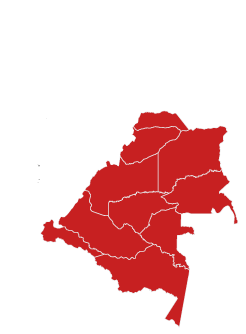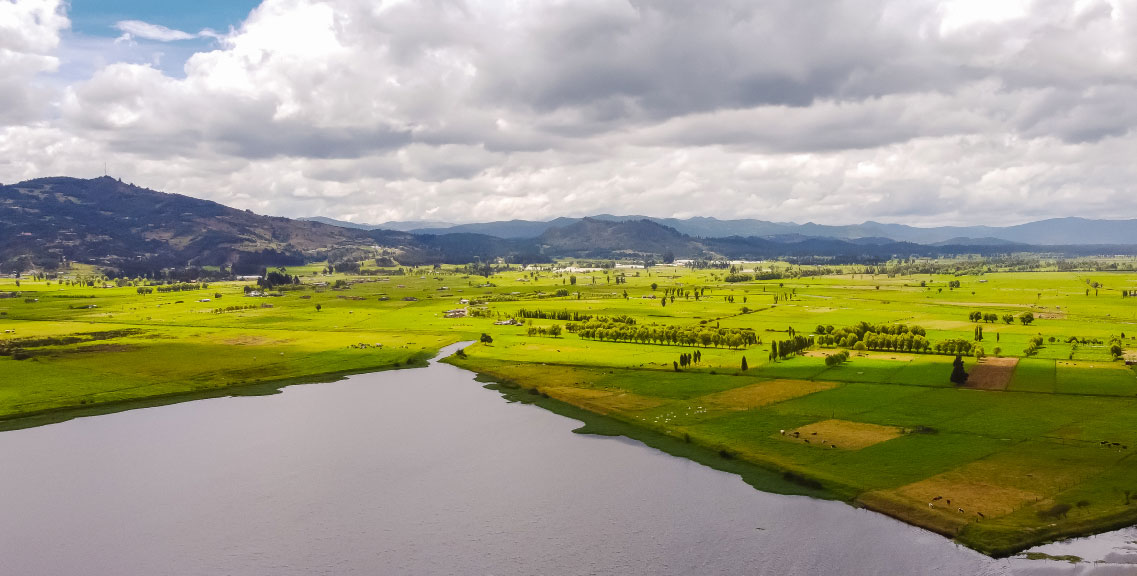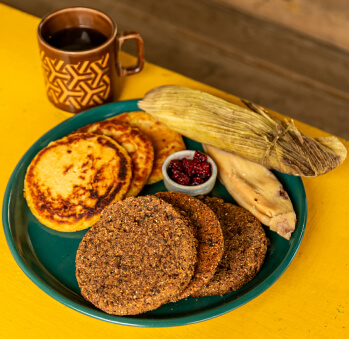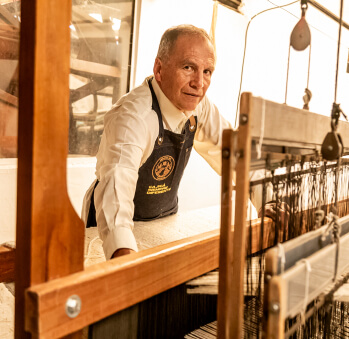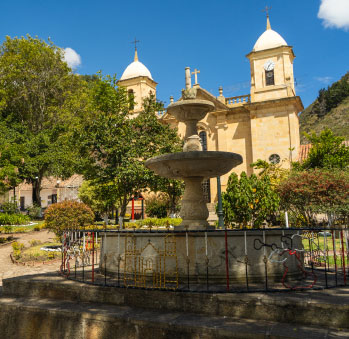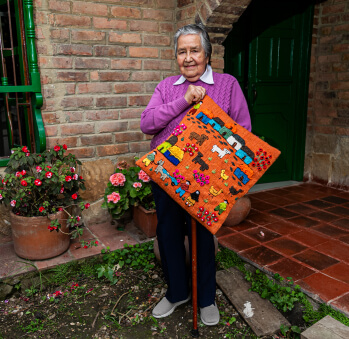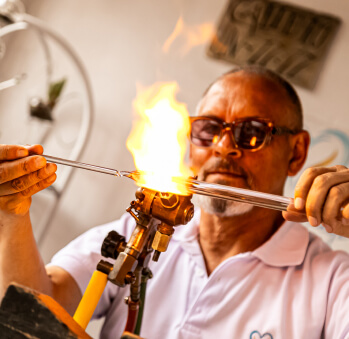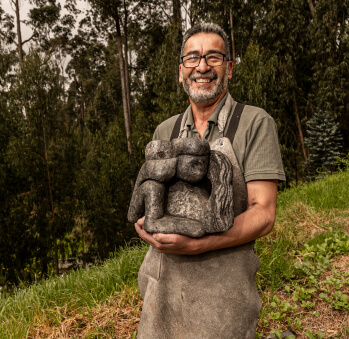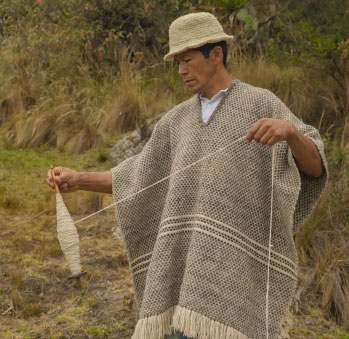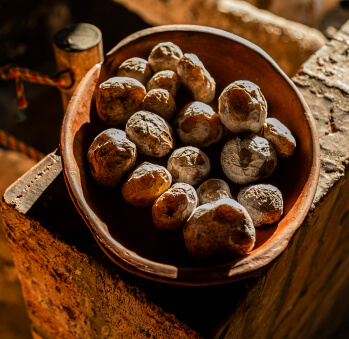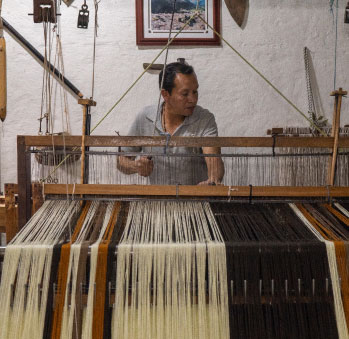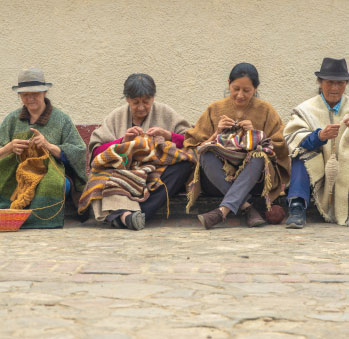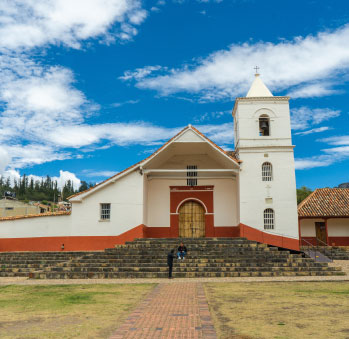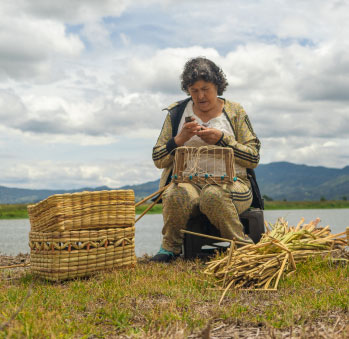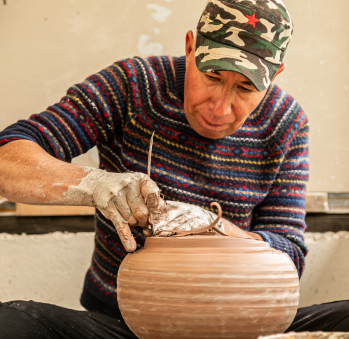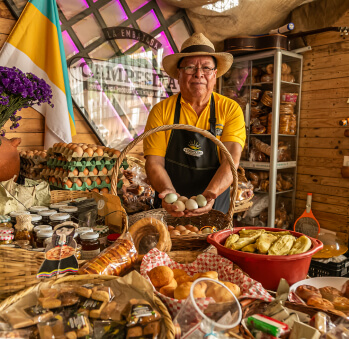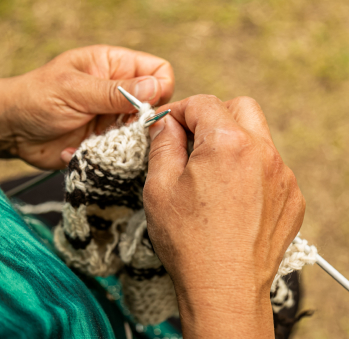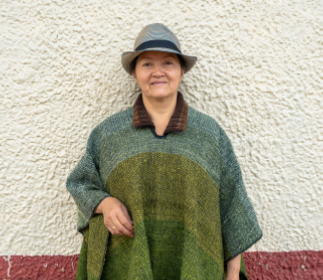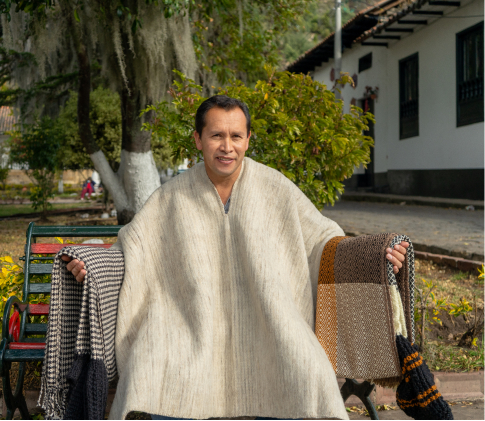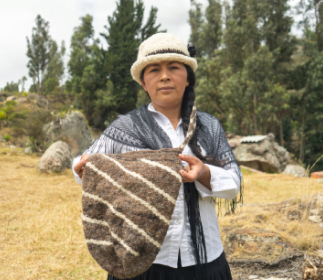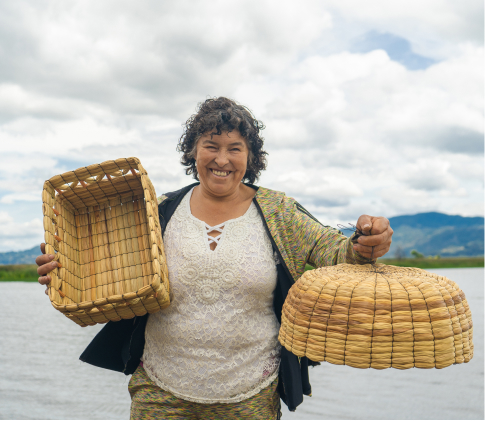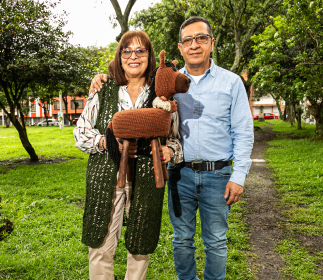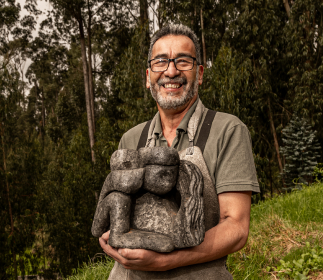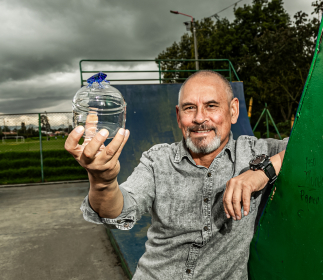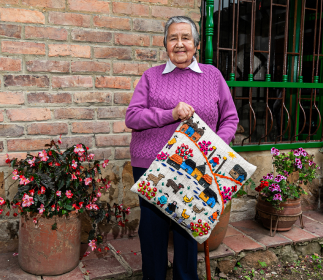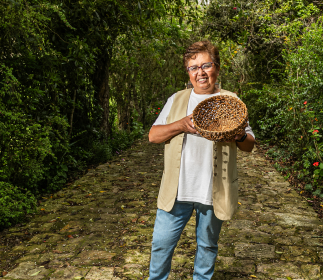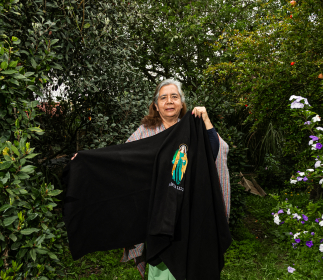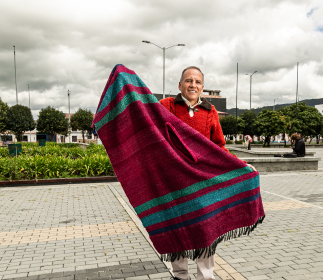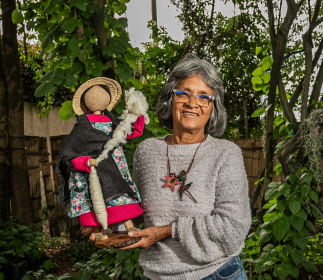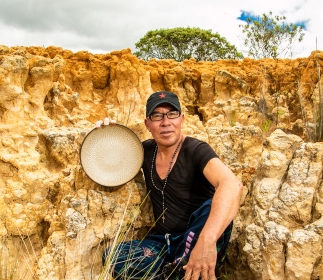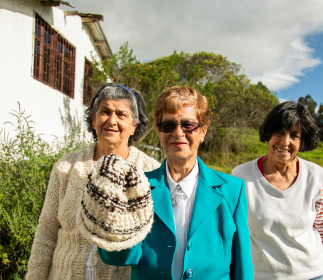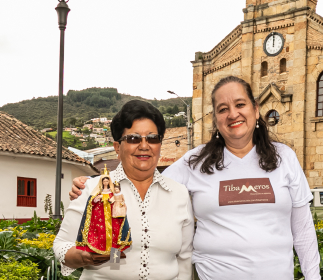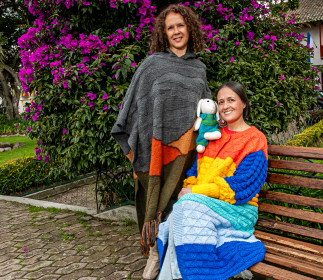Cundinamarca Route
This journey is an invitation to celebrate the cold weather and lose yourself among its greens and browns, dotted with cows seemingly hanging from the mountains and stamped into the valleys. It will be the perfect place to wear a good jacket, or a ruana! because the winds are part of everyday life. Indulge in a knitted hat or gloves and sleep under a warm wool blanket. You will have the chance to explore the Bogotá savanna, traveling from Chía to Zipaquirá, skirting Sopó, and catching sight of the beautiful Tominé Reservoir right next to Guatavita. You will meet artisans working with glass, clay, paper, corn husks, wool, and the famous salt stone from the Zipaquirá salt mines. We also invite you to explore the Ubaté Valley, where the abundance of cows is a sign of a rich dairy land, making it essential to try the cheeses produced here. We suggest stopping at three points: Sutatausa, Cucunubá, and the Fúquene Lagoon to discover the incredible reeds goods. Both towns are beautiful; the first boasts stunning cliffs, and the second preserves its colonial architecture, making it an ideal place to rest surrounded by forests. Here, you will meet master weavers who will teach you the art of the loom and the virtues of sheep’s wool, each sharing their secrets and the history behind their dedicated craft.
Embark on a journey full of history
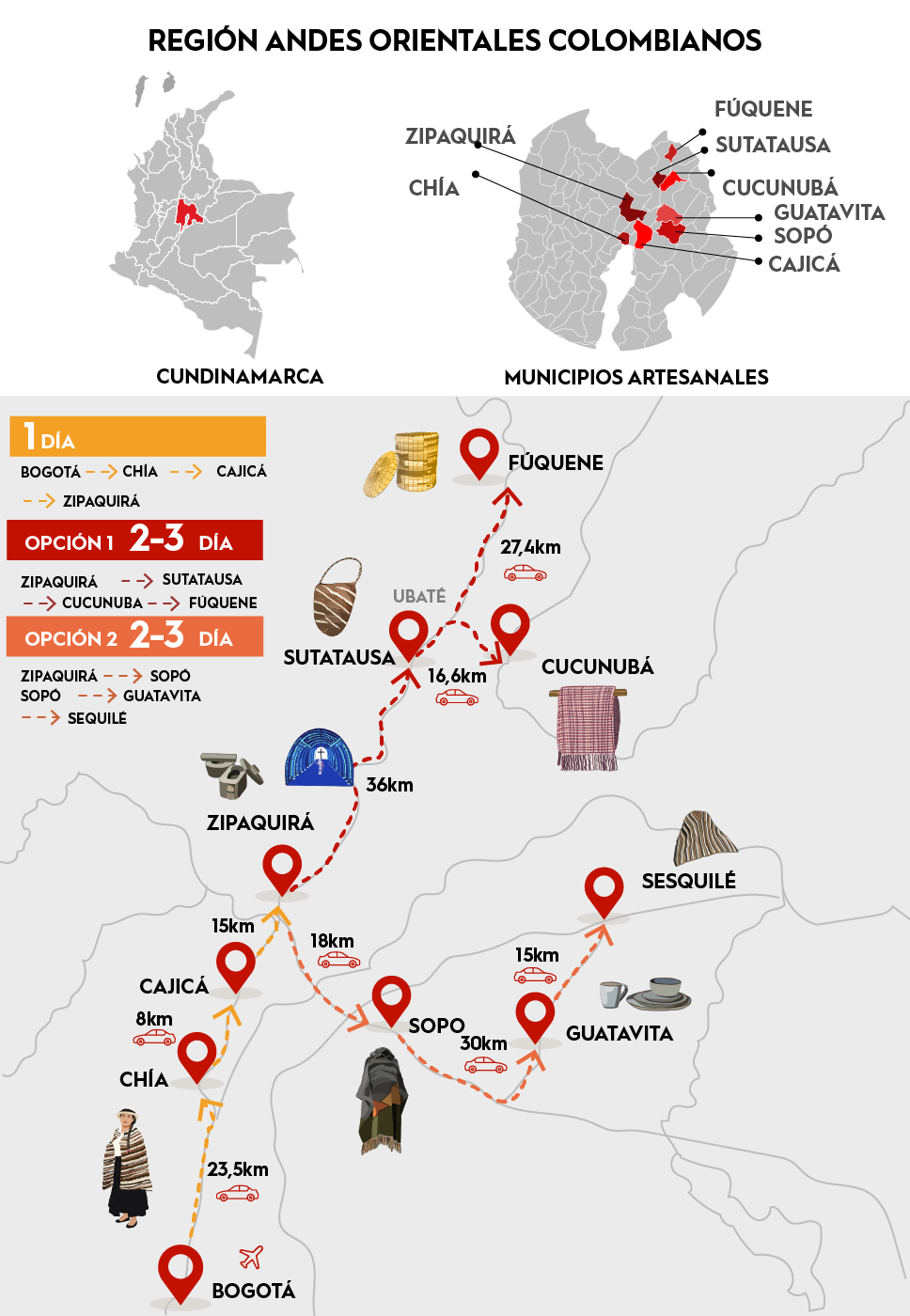
Artisans along the way
Artisans along the way
We recommended this tour
Schedule the visit in advance with the artisans.
Carry cash.
2-3 days
Car or Bus
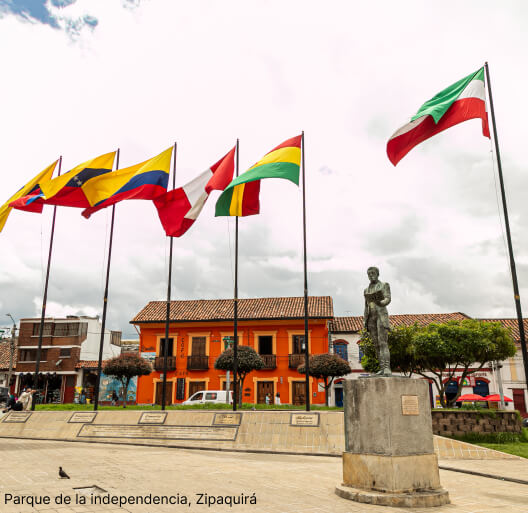
BOGOTÁ – CHÍA – CAJICÁ - ZIPAQUIRÁ
This is an easy weekend trip. Just 23 kilometers from the capital, Chía is home to artisans who will undoubtedly make you want to return. Meet weavers like Ana Florentina Montejo and Ana Rosa Torres, paper basket maker Sandra Avelino, and glass artisan Jorge Enrique Ayala. In Chía, known as the City of the Moon, visit its historic center framed by eight portals and the Santa Lucía Church, as well as the monument to the Raza Chibcha. Don’t miss the Valvanera Church, which inspired the traditional embroidery of Fonquetá. Just 9 kilometers away is Cajicá, land of carpets, where we want you to meet Pedro Manuel Sánchez, one of the great weavers of this art, and Martha Cecilia Florián, maker of the most traditional dolls of the Cundiboyacense people. Visit the Inmaculada Church, built in 1760. Then, head to Zipaquirá, home of the famous Salt Cathedral, just 15 kilometers away. This is your chance to understand the geological past of this territory, best explained by salt rock sculptor Ronni Martínez. Also meet Gloria Ahumada and Fernando Guerrero, a marriage of a sculptor and a weaver. You can also visit the Archaeological Museum and the Comuneros Square, continuing your historical journey. We recommend staying overnight in this town. The next day, we suggest two different routes: via Sutatausa or via Sopó. Let’s explore them:
VIA SUTATAUSA: ZIPAQUIRÁ – SUTATAUSA – CUCUNUBÁ
36 kilometers from Zipaquirá, how can you not fall in love with the mountains surrounding Sutatausa? The cliffs are worth hiking and contemplating fully, so we suggest an early start to see them clear up with the weather. The two-hour hike reveals beautiful rock paintings and ends at the stunning rocky cliffs, 3,000 meters high. In town, don’t miss the cemetery with a centuries-old painted stone featuring weaving patterns, and the San Juan Bautista doctrinal church with incredible murals, including one of a chief’s wife in her traditional mantle. These traces reveal the deeply rooted weaving tradition in this town. Learn about it from the eloquent and formidable master Luz María Rodríguez. Gastronomic recommendations: quinua arepas from Doña Celina and hot chucula from Mrs. Dilia—just ask for them. We recommend staying in Cucunubá, about twenty minutes away.
CUCUNUBÁ – FÚQUENE
Just 16 kilometers from our previous destination, Cucunubá looks like a nativity scene. Walking its cobblestone streets with white facades and clay-tiled roofs feels like traveling back in time. It’s a tourist town with ample hotel and dining options. Don’t miss the local homemade kumis, a true delight. Meet expert wool weavers Gloria Pérez and Héctor Rodríguez, and explore the Weaving Tradition Museum, a living museum where William Contreras weaves and teaches the next generation of artisans. Like any colonial town, churches are essential and well-preserved. Climb the Lourdes Chapel Hill for a stunning view of the beautiful valley. Now, drive to Fúquene, just 27 kilometers away, and be awed by the lagoon landscape. Here, reeds grow for traditional Fúquene crafts, robust and plump baskets and mats which have decorated our homes since forever. Discovering the source of the raw material is essential in understanding artisanal mastery. Apart from visiting Flor Alba Briceño, take a boat ride on the lagoon. To complete the trip, climb to El Soche Paramo for lovely hikes and bird watching. A must-stop for food: Colfrance for delicious cheeses and yogurts.
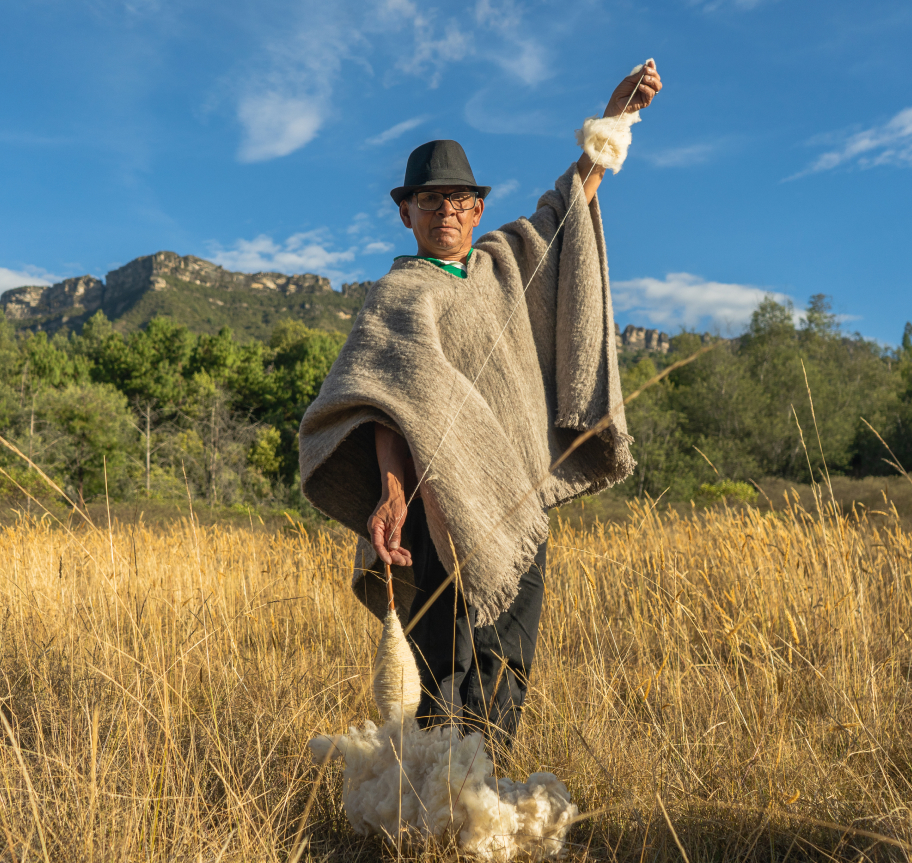
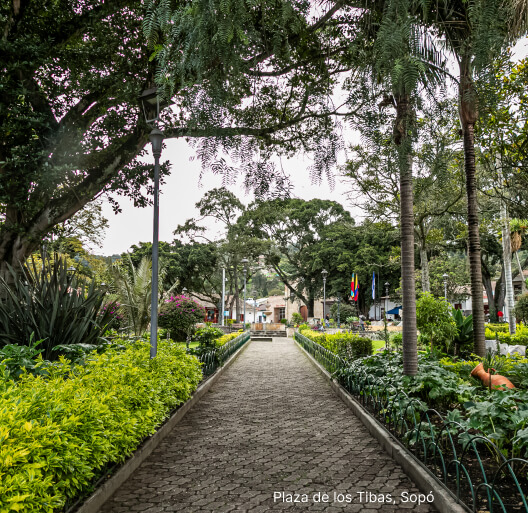
VIA ZIPAQUIRÁ – SOPÓ
Sopó, 18 kilometers away from Zipaquirá, is widely known for La Cabaña Alpina, where you must stop for desserts. Enjoy strawberries with cream, bocadillo with cheese, blackberry jam, milk pudding and other sweets to prepare for immersing yourself in a religious territory with highlights like the Nuestro Señor de la Piedra Sanctuary and the Divino Salvador Parish, featuring beautiful colonial archangel paintings. Inspired by these paintings, artisans Adriana de Jesús Arango and Carmen Guapo create them with corn husks. You’ll also meet the Alarcón sisters, who weave beautiful sweaters in the latest fashion. Don’t miss the Pionono Ecological Park, a forest reserve with numerous aquifers and a refuge for hares, skunks, armadillos, and numerous birds. If you love adventure, try Parapente Paraíso and fly over the beautiful Bogotá savanna. On the way to Sopó, visit Jaime Duque Park, with its Taj Mahal replica, a fun amusement park.
SOPÓ – GUATAVITA – SESQUILÉ
Leaving Sopó via Guasca, you’ll reach Guatavita just 30 kilometers away. This is a beautiful journey through the savanna, with stunning views of the Sopó Valley as you ascend the mountains. You’ll encounter desert-like landscapes contrasting with green mountains and the border of the Tominé Reservoir. Before reaching Guatavita, detour to El Hatillo village to meet potter Jaime Cortés and learn the secrets of clay. With this knowledge, visit Guatavita La Nueva, view the lagoon, and enjoy the varied gastronomy and delicious desserts. The landscape and architecture will transport you to the El Dorado legend. Walk by the Cacica Fountain and take photos at the Lovers’ Bridge. See the once-famous bullring, now a testament to changing customs. Continue around the reservoir, with several country restaurants for a lovely day out. In Chaleche, visit the women of the Chaleche Artisan Group, a weaving association with over half a century of history. Finally, stop in Sesquilé, visit its cathedral, and stock up on delicious dairy products, baked goods, and vegetables from La Embajada Campesina. For a challenging several-hour hike and climb, the Cerro de las Tres Viejas is your destination.
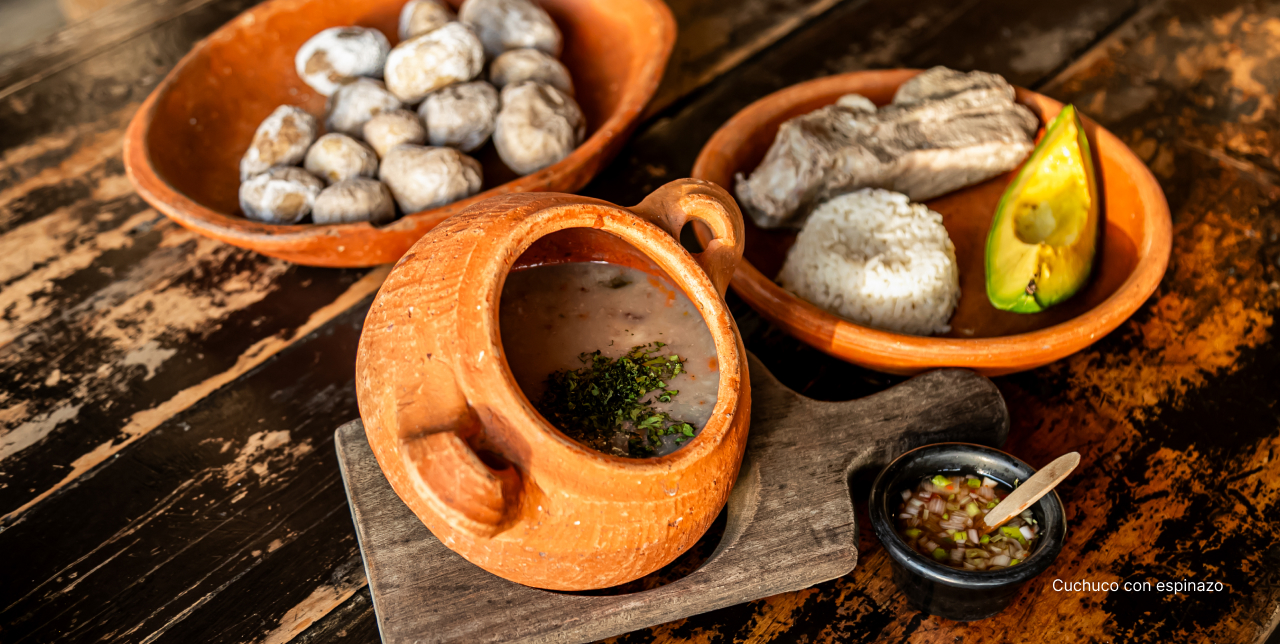
Traditional cuisine
and typical bites
Provoke yourself
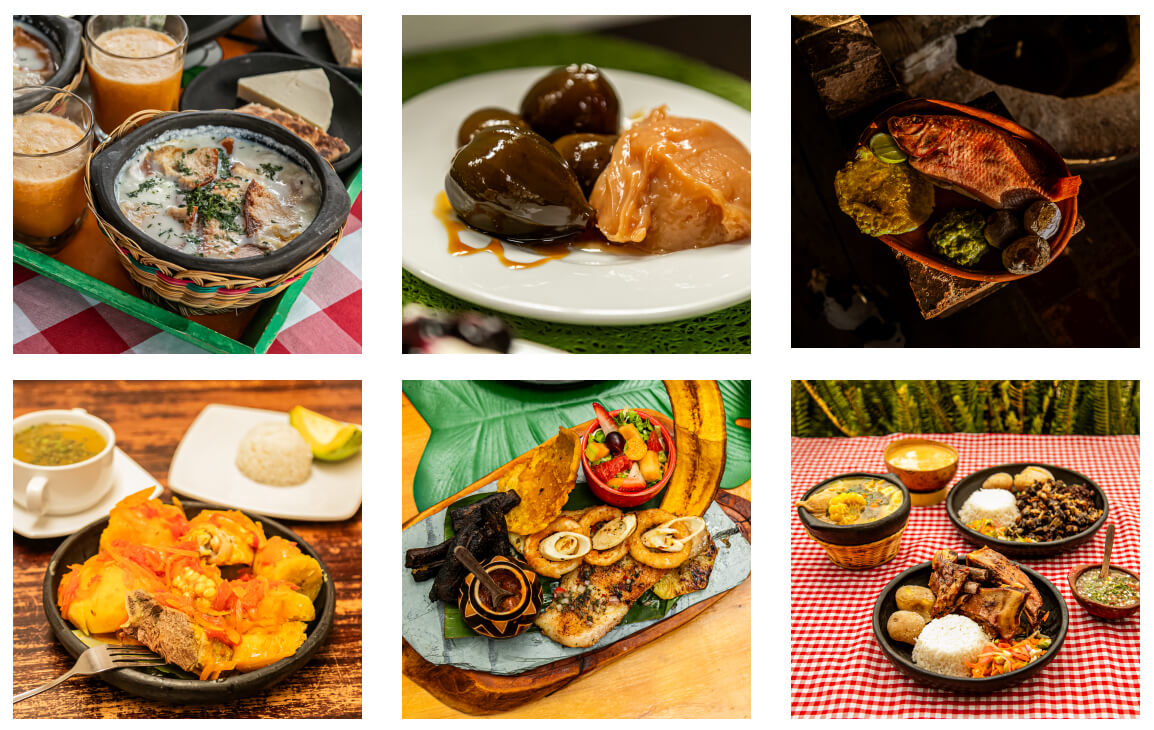
Don't leave without eating this 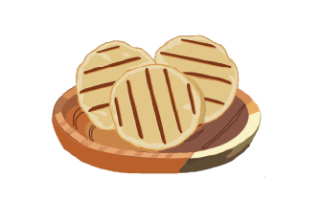
In these cool lands, known as the Sabana de Bogotá (Bogotá’s plain), especially in the regions of Sabana Centro, Almeidas, and Guatavita, due to the climate, simple yet hearty soups like changua, wheat or barley cuchucos, mazamorras, pucheros, sancocho stews, and ajiaco are commonly prepared to warm up. A good ajiaco santafereño is a must when visiting this region. This traditional soup is made with chicken broth, corn on the cob, and a variety of potatoes—sabanera, pastusa, and criolla—each contributing flavor and texture. A distinctive feature is the use of guascas, a green herb native to the Andes. The soup is served with shredded chicken, avocado, sour cream, and capers. You can enjoy a delicious ajiaco at Casa Vieja in Sopó or La Puerta Falsa in Zipaquirá.
Another dish you can’t miss is mazamorra chiquita, a labor-intensive soup made with beef ribs, murillo cut meat, tripe, vegetables, cubios (a local tuber), potatoes, and corn flour, which is first dissolved in water before being added to the mixture. You can try this dish at La Gallina El Político in Cajicá or Zipaquirá.
To lunch we go 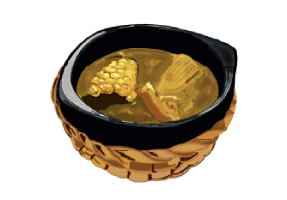
This region has a strong preference for beef, pork, free-range chicken, and fritanga (a dish made from blood sausage, pork, beef, chorizo, and offal), which you can try at Restaurante Colombia in Chía. You can also enjoy the famous piquete (a dish of cooked chicken that is then grilled, served with plantain, cassava, arracacha, potatoes, and corn on the cob, all drenched in a savory sauce and served on banana leaves). This delicious dish is also available at La Gallina El Político in Cajicá or Zipaquirá.
Recently, traditional cuisines from other regions of Colombia have been added to the local culinary offerings. Visit the Amazonic restaurant in Chía to try pirarucú fish prepared in several ways, or Graná restaurant in Zipaquirá, where food is served on rock salt slabs.
Flavors to discover and snack on 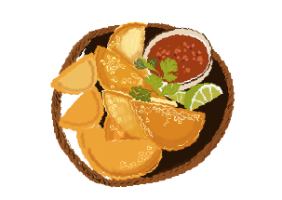
In the Sabana, you’ll find a variety of baked goods, arepas, and breads that are enjoyed throughout the day. La Magola in Chía is a traditional place to try the following:
Almojábanas: round rolls made from cornmeal, cuajada (fresh cheese), baking powder, and eggs.
Mantecada: a cake or muffin made from cornmeal, butter, and eggs.
Pan de yuca: a crispy, baked bread made from cassava starch with cheese, cuajada, and eggs. A true delight.
Garullas: a type of bread made with cornmeal and cuajada.
Tamales: you’ll also find them on this route. A tamal is a dough made from seasoned corn flour with achiote, filled with bacon, pork, chicken, a slice of carrot, a slice of potato, and parsley, all wrapped in banana leaves and steamed. At La Puerta Falsa in Zipaquirá, you can enjoy your tamal with hot chocolate, almojábana, and fresh cheese.
Changua: made with milk, cilantro, onion, and egg. You can enjoy it at Embajada Campesina in Sesquilé (order in advance to ensure it’s ready when you arrive). Here, you can also buy fresh farm eggs, fruits, vegetables, baked goods, cheeses, and other produce from small-scale local farmers.
At Palo de Agua restaurant in the Fonquetá area, when visiting artisans Ana Florentina and Ana Rosa Torres de Cifuentes, you can try peto corn arepa , seven-corn arepa, sweet corn arepa with cheese, and corn envueltos, along with changua. Be sure to place your order in advance. The chef and owner, Margarita, can also cook lunche for you.
To sweeten the palate and unmissable drinks 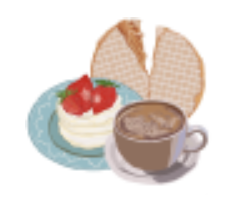
At Helados San Jerónimo in Cajicá, you’ll find a beloved traditional spot offering delicious fruit ice creams, strawberries with cream, cuajada with melao (syrup), sorbete and esponjado de curuba (curuba sorbet), and postre de natas (cream dessert), among other treats.
At Salón de Onces La Abuelita, Cabaña de Alpina, and Castilac in Sopó, you can also enjoy a variety of iconic desserts made with arequipe, such as figs in syrup and barquillos, strawberries with cream, casado (a dessert of fresh cheese with arequipe), and blackberry jam.
Near Guatavita, you’ll find Restaurante Oriente Cocina de Mercado, a place where you can “taste the territory and the aromas that travel,” as described by chef and owner Tomás Rueda. The menu changes according to the local ingredients in season, and it’s sure to surprise and delight you.
Among the traditional beverages of Cundinamarca are rice-based masato and corn-based masato. In its natural form, it’s a refreshing drink. The rice version and the corn version pair perfectly with the baked goods and breads mentioned earlier. They are also available fermented in the traditional way. At Salón de Onces La Abuelita in Sopó’s main square, you can enjoy these drinks along with a variety of sweet treats.
The climate of the Sabana makes hot drinks especially comforting, and agua de panela is a warm and soothing beverage made by boiling sugarcane with water. It’s ideal when paired with almojábana and fresh cheese at La Puerta Falsa in Zipaquirá or Helados San Jerónimo in Cajicá.
On sunny days, nothing beats a curuba sorbet. Curuba is a fruit from the passionflower family, with a fragrant, slightly tangy taste. It helps alleviate stress and anxiety. You can enjoy this refreshing drink made with milk, and other flavors, at Helados San Jerónimo in Cajicá.
Other local delights 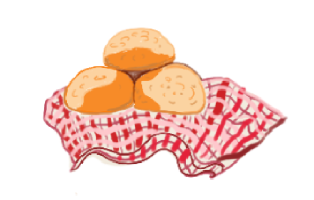
El cordero sesquileño, en la vereda Chaleche en Sesquilé, es un emprendimiento que inició Néstor Vásquez posterior a la pandemia y ha sido muy exitoso con la receta de cordero y chanfaina heredada de su abuela. Lo puedes acompañar con chicha.
En este municipio, en el restaurante Horno de sal, también puedes probar unas papas exquisitas cocidas en salmuera y en hornos de sal (el domingo es el día para ir). Sirven también Cuchuco de trigo con espinazo de cerdo y pescado cocinados a la sal. Cuenta con una vista esplendida del Embalse de Tominé.
Cocineritos Guatavita, cuenta con tres sedes en la zona: parapente…. (Pionono), Guasca, y Guatavita. Los tres ofrecen ambiente campestre para que vayas con la familia y comas carnes ahumadas como es la tradición de esta zona.
El puchero también es un plato tradicional que lleva variedad de carnes, pollo, plátano verde y maduro, longaniza, repollo, mazorca, papa sabanera y yuca. Al servirlo se presenta con un guiso criollo. Pruébalo en La Puerta Falsa, en Zipaquirá, en donde ofrecen también este delicioso plato.
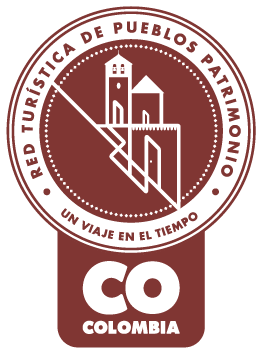
Pueblo Patrimonio
La Red Turística de Pueblos Patrimonio de Colombia es un programa especial del Ministerio de Comercio, Industria y Turismo, ejecutado por FONTUR, que trabaja con 17 municipios de Colombia que poseen declaratoria de Bien de Interés Cultural (BIC) a nivel nacional para su valoración y proyección mediante el turismo, generando así más oportunidades de desarrollo y sostenibilidad en las comunidades.
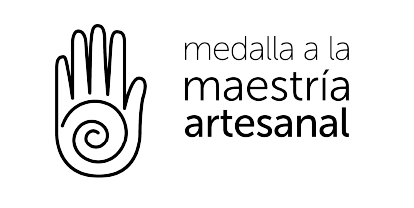
La Medalla a la Maestría Artesanal es un galardón que Artesanías de Colombia entrega anualmente, con el cual se hace un reconocimiento a aquellos artesanos, empresas y comunidades artesanales que, contando con una trayectoria destacada, sobresalen a nivel nacional por su excelencia en el oficio así como por preservar el quehacer artesanal.

Denominación de Origen
Es un signo distintivo que identifica productos reconocidos o famosos por tener una calidad o características específicas derivadas esencialmente del lugar de origen y la forma tradicional de extracción, elaboración y producción por parte de sus habitantes. La protección conferida sobre una Denominación de Origen implica que ninguna persona puede identificar con la denominación protegida productos iguales o similares a los amparados, cuando no provengan del verdadero lugar y no cumplan con las características o calidades que le han dado la reputación al producto reconocido. Las Denominaciones de Origen para productos artesanales colombianos que han sido protegidas por la Superintendencia de Industria y Comercio en nuestro país son actualmente 12.
No puede copiar contenido de esta página

